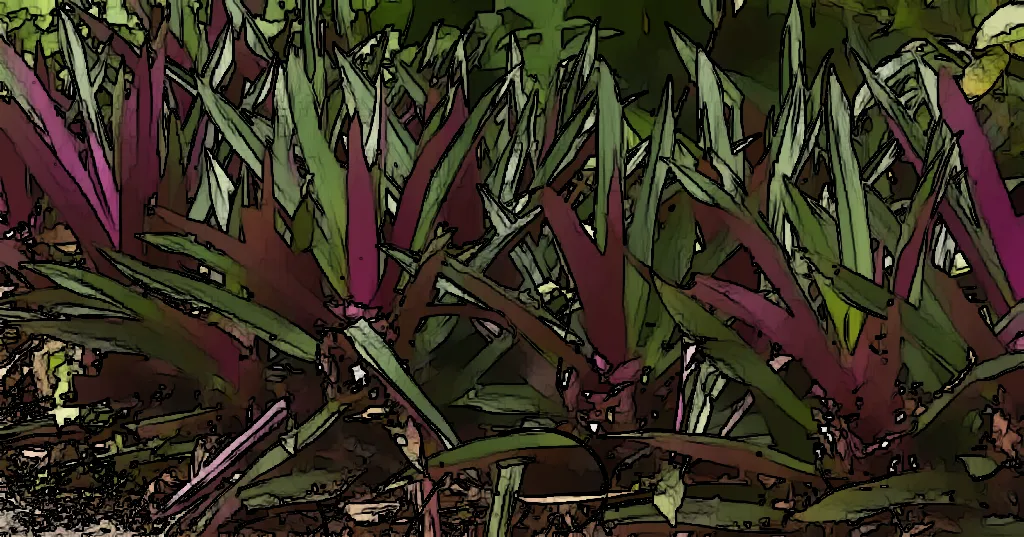Are you tired of the same old indoor plants that everyone seems to have? Looking for something unique, low-maintenance, and bursting with surprises? Look no further than the Rhoeo plant, a quirky and charming addition to any indoor garden.
Table of Contents
Rhoeo Plant Overview: Not Your Average Houseplant
At first glance, the Rhoeo plant may seem unremarkable. But take a closer look, and you’ll see that this plant is full of surprises. With its long, sword-shaped leaves and distinctive purple undersides, Rhoeo is a striking addition to any indoor space. And don’t be fooled by its delicate appearance – Rhoeo is a tough plant that can thrive in a variety of conditions.
Appearance and Characteristics
Rhoeo’s long, narrow leaves give it a distinctive appearance, but it’s the plant’s purple undersides that really make it stand out. These striking undersides make Rhoeo a popular choice for ornamental planting. In addition to its unique appearance, Rhoeo is also a relatively low-maintenance plant, making it an ideal choice for beginner gardeners.
Native Habitat and Popularity
Rhoeo is native to Central and South America, where it grows in a variety of habitats, from rainforests to coastal regions. Its popularity as an ornamental plant has led to its introduction in other parts of the world, including North America and Europe.
Rhoeo Plant Care: Simple and Surprising Tips
Despite its exotic origins, Rhoeo is a surprisingly easy plant to care for. Here are some tips for keeping your Rhoeo happy and healthy:
Light and Temperature
Rhoeo prefers bright, indirect light, but can also tolerate some shade. Avoid placing Rhoeo in direct sunlight, as this can scorch its leaves. In terms of temperature, Rhoeo is relatively adaptable and can tolerate a range of temperatures, from cool to warm.
Water and Fertilizer
Rhoeo is a relatively low-maintenance plant when it comes to watering. Allow the top inch of soil to dry out before watering, and be careful not to overwater, as this can lead to root rot. Rhoeo also does not require frequent fertilization – a light feeding every few months should suffice.
Pest Prevention
Rhoeo is generally a pest-resistant plant, but it’s still important to keep an eye out for common indoor plant pests, such as spider mites and mealybugs. Regularly inspect your Rhoeo for signs of infestation, and take steps to prevent pests from taking hold.
Benefits of Rhoeo Plant: More Than Just a Pretty Face
Rhoeo may be a striking addition to your indoor space, but it’s also full of surprising benefits. Here are just a few:
Air-Purifying Properties
Rhoeo is an excellent air-purifying plant, helping to remove harmful pollutants from indoor air. In addition to its aesthetic benefits, Rhoeo can help improve the overall health and well-being of your indoor environment.
Non-Toxic and Safe for Pets and Children
Unlike some indoor plants, Rhoeo is non-toxic and safe for pets and children. This makes it an ideal choice for households with young ones or furry friends who love to explore and chew on everything. Rhoeo plants are also known for their air-purifying properties. They absorb harmful toxins from the air and release oxygen, which improves the air quality in your home.
How to Care for Rhoeo Plants
Now that you know some of the benefits of having Rhoeo plants in your home, let’s talk about how to care for them. Here are some tips to keep your Rhoeo plant healthy and thriving:
- Light: Rhoeo plants thrive in bright, indirect light. Too much direct sunlight can scorch their leaves, so be sure to place them in a spot where they receive bright light for a few hours a day.
- Water: Rhoeo plants prefer to be kept moist but not waterlogged. Water them when the top inch of soil feels dry, but be careful not to overwater them as this can lead to root rot.
- Soil: Rhoeo plants prefer well-draining soil. You can use a mix of potting soil and sand or perlite to improve drainage.
- Temperature and Humidity: Rhoeo plants prefer warm and humid conditions. They can tolerate temperatures between 60-85°F (15-29°C) but prefer temperatures on the warmer end of the spectrum.
- Fertilizer: Rhoeo plants don’t require a lot of fertilizer, but you can fertilize them once a month during the growing season (spring and summer) to promote healthy growth.
Common Problems with Rhoeo Plants
Like any plant, Rhoeo plants can develop problems if not cared for properly. Here are some common issues you might encounter:
- Browning leaves: If your Rhoeo plant’s leaves are turning brown, it could be a sign of overwatering. Make sure the soil is well-draining and that you’re not watering the plant too frequently.
- Yellowing leaves: If your Rhoeo plant’s leaves are turning yellow, it could be a sign of underwatering. Make sure you’re watering the plant regularly and that the soil is staying moist.
- Fungus gnats: Rhoeo plants are susceptible to fungus gnats, which are tiny black flies that feed on the plant’s roots. You can prevent fungus gnats by allowing the soil to dry out slightly between waterings and by using a sticky trap to catch them.
Conclusion
Rhoeo plants are a beautiful and low-maintenance addition to any indoor garden. With their air-purifying properties and non-toxic nature, they are a great choice for households with pets and children. By following the tips in this article, you can keep your Rhoeo plant healthy and thriving for years to come.
